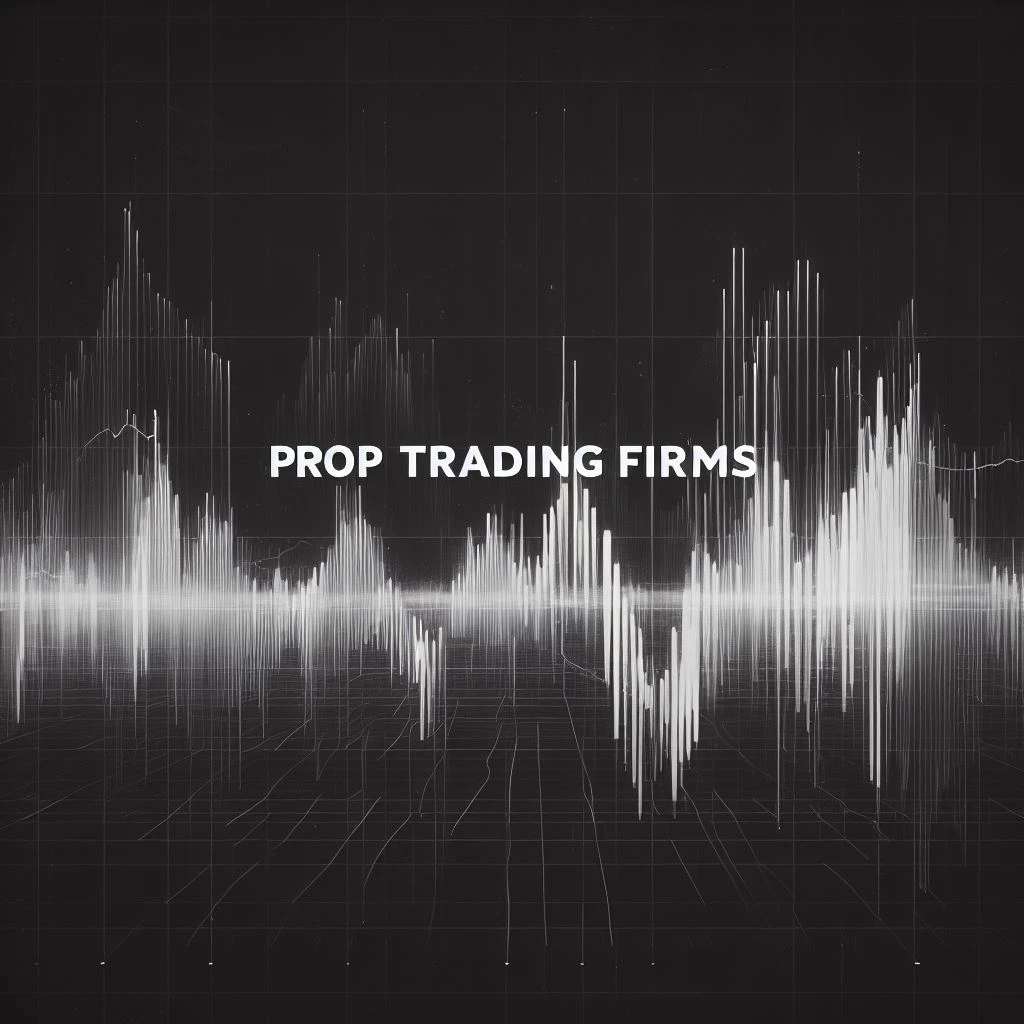Prop Trading vs Hedge Funds
In the ever-evolving landscape of the financial world, understanding different investment vehicles is not just beneficial—it’s essential. Whether you’re an investor, a trader, or someone interested in finance, you’ve likely come across terms like Proprietary Trading and Hedge Funds. These two investment approaches are often mentioned in the same breath but are fundamentally different in many ways. In this comprehensive guide, we’ll delve into the key differences between Proprietary Trading and Hedge Funds, shedding light on their unique characteristics, risks, and rewards.
What is Proprietary Trading?
In the realm of finance, Proprietary Trading, often referred to as “prop trading,” is a practice that stands out for its unique approach to generating profits. Let’s delve into its various facets.
Definition and Basics
Proprietary Trading is the act of a financial firm or bank trading stocks, bonds, currencies, commodities, or other financial instruments with its own money, rather than on behalf of its clients.
How Prop Trading Firms Operate
Prop trading firms operate by providing their traders with the capital required to trade, thereby earning a share of the profits generated. These firms often have advanced trading technology, including algorithms and high-frequency trading systems, to gain an edge in the market.
Strategies Used in Prop Trading
Various strategies can be employed in prop trading, ranging from day trading and swing trading to statistical arbitrage and market making. The choice of strategy often depends on market conditions, the firm’s expertise, and risk tolerance.
Risks and Rewards
While prop trading can be highly lucrative, it’s not without its risks. Firms engage in this type of trading must have robust risk management strategies in place to mitigate potential losses. The rewards, however, can be massive, especially for traders who can effectively leverage market opportunities.
What is a Hedge Fund?
In the intricate tapestry of investment vehicles, hedge funds hold a unique position. Often considered the playground for the wealthy and institutional investors, hedge funds offer a different approach to maximizing returns. Let’s unpack what makes them distinct.
Definition and Basics
A hedge fund is a pooled investment fund managed by a professional fund manager. Unlike mutual funds, hedge funds are less regulated and have the flexibility to invest in a wide range of assets, including stocks, bonds, commodities, and derivatives.
Structure of Hedge Funds
Hedge funds are typically organized as private partnerships and may even reside offshore for tax and regulatory benefits. They have specific requirements for investors, often necessitating a high minimum investment or net worth.
Investment Strategies
Hedge funds employ a variety of strategies to achieve above-average returns. These can range from equity and fixed-income strategies to more complex, event-driven goals. The choice of strategy is often tailored to the fund manager’s expertise and the risk tolerance of the investors.
Risks and Rewards
Investing in hedge funds comes with its own set of risks and rewards. While they aim for higher returns, hedge funds also employ riskier strategies and leverage, which could lead to significant losses. However, for those who can stomach the risk, the rewards can be quite lucrative.
Source of Capital
How Hedge Funds Raise Capital
Hedge funds are often seen as the lucrative playgrounds for the wealthy and institutional investors. They pool money from these high-net-worth individuals and organizations to invest in a variety of asset classes. Hedge funds usually have massive assets under management, thanks to their ability to attract capital from endowments, pension funds, and extremely wealthy individuals.
How Prop Trading Firms are Funded
In contrast, proprietary trading firms or prop firms operate on a different model. They are primarily funded by the firm itself or through a select group of investors. Unlike hedge funds, they don’t raise capital from the public. One unique aspect is the trading challenge that many prop firms offer. Aspiring traders have to pay for these challenges and go through them to get funded. If they fail, they don’t get funded and have to try again, providing a steady cash flow to the prop firms from failed challenges.
Comparison Between the Two
When it comes to the source of capital, hedge funds and prop trading firms are worlds apart. Hedge funds pool outside money to generate returns, while prop trading firms use inside money, essentially investing their own capital. This fundamental difference often dictates the risk strategies and compliance regulations that each type of firm must adhere to.
Regulation and Compliance
Regulatory Landscape for Hedge Funds
Navigating the complex regulatory environment is a crucial aspect for hedge funds. In the United States, they fall under the purview of the Securities and Exchange Commission (SEC). However, these funds often enjoy a greater degree of investment flexibility due to their primary clientele being accredited investors. These are individuals or entities that meet specific income or net worth criteria, and are thus presumed to be more financially savvy.
Regulatory Landscape for Prop Trading
Proprietary trading firms have faced increased regulatory scrutiny, particularly since the 2008 financial crisis. The Volcker Rule, a federal regulation, restricts certain speculative activities by banks and their affiliates. This rule has significantly impacted how prop trading firms operate, especially those affiliated with larger financial institutions.
Key Differences
The key differences in the regulatory landscapes of hedge funds and prop trading firms are stark. Hedge funds generally have more latitude in investment choices, while prop trading firms are often constrained by stringent regulations like the Volcker Rule. Understanding these regulatory nuances is vital for investors and traders when choosing between these two financial vehicles.
Fee Structure
Management and Performance Fees in Hedge Funds
When it comes to hedge funds, the fee structure is often described by the phrase “2 and 20.” This means that hedge fund managers typically charge a 2% management fee on the total assets under management (AUM) and a 20% performance fee on profits generated. The 2% fee is used to cover operational costs like staff salaries and office expenses, while the 20% fee serves as an incentive for the fund managers to perform well.
It’s worth noting that the 20% performance fee is usually calculated based on profits exceeding a predetermined threshold, often around 8%. Critics argue that this fee structure can be excessively high, especially when the fund fails to outperform the market. However, the lucrative potential for massive profits makes this model quite appealing for both managers and investors.
How Prop Trading Firms Make Money
Proprietary trading firms have a unique way of generating revenue. Unlike hedge funds, they don’t charge a management fee. Instead, they make money primarily through the performance of their traders. One of the main ways prop firms make money is from failed trading challenges.
Here’s how it works: aspiring traders have to pay for a trading challenge and go through various trading tests before they get funded. If they fail the trading challenge, they don’t get funded and would need to try again, paying for another challenge. This cycle creates a steady stream of income for the prop firms, especially when you consider the high failure rate among traders.
Comparison and Implications for Investors and Traders
Understanding the fee structure of both hedge funds and prop trading firms is crucial for investors and traders alike. Hedge funds offer a more traditional, albeit expensive, route with their 2 and 20 fee structure. On the other hand, prop trading firms provide a more performance-based model, which can be both rewarding and risky.
For investors looking for a more hands-off approach, hedge funds might be the better option, despite the higher fees. For those who are more risk-tolerant and seek a more active role in trading, prop trading firms offer an intriguing, albeit challenging, avenue for potential profits.
Risk Management
Risk Strategies in Hedge Funds
In the realm of hedge funds, risk management is a cornerstone for ensuring long-term success. Strategies often include diversification across asset classes, sectors, and geographies to mitigate market risk. Advanced tools like Value at Risk (VaR) and stress testing are also employed to quantify potential losses under various market conditions. Portfolio hedging techniques, such as options and futures, are used to offset potential losses, thereby safeguarding the capital.
Risk Strategies in Prop Trading
When it comes to Risk Management in Prop Trading, the approach is somewhat different but equally critical. Prop trading firms often set daily loss limits and position limits to restrict the maximum exposure a trader can have. Real-time monitoring tools and risk management software offer updates on positions, risk exposure, and performance metrics. Traders are also encouraged to use stop-loss orders to protect against adverse market movements. One of the key elements is the use of trading challenges to assess a trader’s risk management skills before they get funded.
Comparative Analysis
Both hedge funds and prop trading firms prioritize risk management, but their methods vary. Hedge funds often rely on diversification and financial derivatives to manage risk, while prop trading firms focus more on real-time monitoring and setting trading limits. Understanding these differences is crucial for traders and investors who are considering either of these as an investment avenue.
Flexibility and Investment Models
Investment Flexibility in Hedge Funds
Hedge funds are often lauded for their investment flexibility, allowing them to adapt to various market conditions. They can invest in a wide range of asset classes, from equities and bonds to commodities and real estate. This flexibility is particularly beneficial during volatile market periods, enabling hedge funds to pivot their strategies to capitalize on emerging opportunities or mitigate risks.
Trading Models in Prop Trading
Proprietary trading firms operate on different trading models, each with its own set of rules and risk parameters. From high-frequency trading to statistical arbitrage, these models are designed to exploit specific market inefficiencies. Unlike hedge funds, prop trading firms are often more constrained by regulatory requirements, which can limit their trading flexibility to some extent.
How They Differ
The key difference between the two lies in their approach to flexibility and investment models. Hedge funds have the liberty to diversify their portfolios across various asset classes and employ complex trading strategies. In contrast, prop trading firms are generally more specialized, focusing on specific trading models and markets. This specialization can be both an advantage and a limitation, depending on the market conditions and the skill set of the traders.
Incentives and Bonuses
Incentive Structures in Hedge Funds
Hedge funds often employ a two-tiered fee structure, consisting of a management fee and a performance fee. The management fee is usually a fixed percentage of the total assets under management (AUM), while the performance fee is a percentage of the profits generated. This dual fee structure serves as a lucrative incentive for hedge fund managers to maximize returns for their investors.
Profit-Sharing in Prop Trading
In proprietary trading firms, the incentive structure is quite different. Traders are often given a profit-sharing agreement rather than a fixed salary. One unique aspect is the trading challenge that traders have to go through to get funded. If they fail this challenge, they don’t get funded and have to try again. This is one of the main ways prop firms make money, capitalizing on failed challenges.
Comparative Insights
When comparing the two, hedge fund managers usually have a more stable income due to the management fees, regardless of performance. On the other hand, prop traders have a more variable income, highly dependent on their trading success. The risk and reward are higher in prop trading, making it a more volatile career choice in terms of financial incentives.
Leverage and Market Impact
Use of Leverage in Hedge Funds
Leverage is a double-edged sword in the financial world, especially when it comes to hedge funds. By using borrowed capital to amplify returns, hedge funds can achieve impressive gains. However, this comes with increased risk and volatility. The use of leverage in hedge funds is often a key factor in their ability to outperform traditional investment vehicles.
Market Impact of Prop Trading
Proprietary trading firms, or prop trading firms, also make use of leverage, but in a different context. Unlike hedge funds, which pool external capital, prop trading firms use the firm’s own capital to trade. The market impact of prop trading can be significant, especially when leverage is involved. Leverage in prop trading can amplify both profits and losses, making risk management crucial.
Comparative Analysis
Both hedge funds and prop trading firms use leverage to amplify their potential returns, but the implications are different. Hedge funds often use leverage to take larger positions in the market, which can lead to higher volatility and risk for investors. On the other hand, prop trading firms use leverage to maximize their own profits, often at the expense of increased market volatility. Understanding the nuances between the two can help investors make more informed decisions.
Conclusion
Summary of Key Differences
In the financial landscape, Proprietary Trading and Hedge Funds stand as two distinct investment vehicles, each with its unique set of rules, risks, and rewards. While Prop Trading is more about quick, short-term gains using the firm’s capital, Hedge Funds focus on long-term profitability through a diversified portfolio funded by investors. Regulation is tighter for Hedge Funds, whereas Prop Trading firms enjoy more freedom but with its own set of challenges.
Practical Takeaways for Traders and Investors
For traders who thrive on high-risk, high-reward scenarios and have a knack for quick decision-making, Prop Trading could be a lucrative option. On the other hand, if you’re an investor looking for a more stable, long-term commitment with professional management, Hedge Funds are the way to go. Always remember, the higher the risk, the higher the potential return, and vice versa.
Final Thoughts
In my opinion, neither is inherently better than the other; it all boils down to your financial goals, risk tolerance, and investment strategy. Both have their pros and cons, and understanding these can help you make an informed decision. So, whether you’re drawn to the fast-paced world of Prop Trading or the more strategic, long-term approach of Hedge Funds, make sure you’re well-informed and prepared for the journey ahead.

FAQs
Is prop trading better than hedge fund?
The question of whether prop trading is better than hedge funds often boils down to individual preferences, risk tolerance, and investment goals. Prop trading offers a more hands-on approach and potentially massive profits, but it comes with its own set of risks. Hedge funds, on the other hand, offer a diversified investment portfolio managed by professionals. Both have their merits and drawbacks, and the “better” option would depend on what you’re looking to achieve.
Do prop firms allow hedging?
Yes, many prop firms do allow hedging as part of their trading strategies. Hedging is a risk management technique used to offset potential losses, and it’s a common practice in both prop trading and hedge funds. However, the extent to which hedging is allowed can vary from firm to firm, so it’s essential to understand the specific policies of the prop firm you’re considering.
What is the difference between prop trading and trading?
Prop trading, or proprietary trading, involves trading financial instruments with a firm’s own capital rather than client funds. This is different from regular trading where individual investors use their own money to trade. Prop trading aims to earn full profits from trades, rather than just receiving commissions, and often involves more complex strategies and higher risks.
Is a hedge fund a trading firm?
While both hedge funds and trading firms operate in the financial markets, they are not the same. A hedge fund is a pooled investment fund that employs various strategies to earn returns for its investors. Trading firms, particularly prop trading firms, use their own capital to trade and aim to make profits for the firm itself. Hedge funds manage client money, whereas prop trading firms risk their own capital.
Is Prop firm trading worth it?
Prop firm trading can be worth it for those who have the skills but lack the capital to trade in significant volumes. Many prop firms offer leverage and cover the losses, allowing traders to trade without the financial risk. However, traders usually have to pass a trading challenge to get funded, and failing this can result in not getting funded.
Do prop traders make good money?
The earning potential for prop traders can be substantial, especially for those who are skilled and can manage risks effectively. However, the profits are often split between the trader and the firm, and there may be performance benchmarks that need to be met. It’s not a guaranteed path to riches but can be lucrative for the right individuals.














